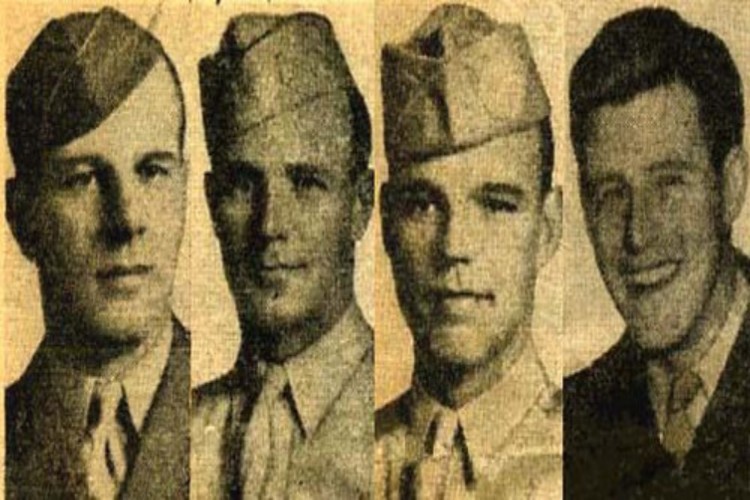Did You Know That ‘Saving Private Ryan’ Was Inspired By These Brothers?
The 1998 movie Saving Private Ryan was a massive success at the box office, featuring a star-studded cast, hallmark acting, and- most importantly- a storyline for the ages. This movie, like many other blockbusters, was inspired by real-life events. The film follows the mostly-true story of one brother embarking on a mission to save the other in the middle of World War 2. During the war, the Niland brothers could never have predicted just how inspirational their story would be. Here are some of the events that laid the foundation for one of the most iconic war movies ever filmed…

There’s A Reason They Were Split Up
There were originally four siblings in the Niland family. Robert and his brother Preston had enlisted just before World Ward 2 began. Once America entered the war, the oldest brother, Edward, followed by the youngest, Fritz, joined in 1942. Those four brothers were spread out between different army units.
The 501st and 505th Parachute Infantries held brothers, Fritz and Robert, while Preston was placed in the 22nd Infantry and Edward in the Air Force. They were split up between units and branches to spare the Niland family a parallel fate to that of the Sullivans, whose five children were killed earlier that same year.
The Tragic Sullivan Brothers
The American USS Juneau was sunk by Japanese torpedoes during the battle of Guadalcanal in the South Pacific. Five brothers (Francis, George, Joseph, Madison, and Albert Sullivan) had all enlisted in the Navy after their friend’s death during Pearl Harbor. They requested to serve together on the same ship, which the Navy agreed to, even though it wasn’t a common practice. Unfortunately, they were all killed when the ship sank following the Japanese attack in November of 1942.
Learning A Lesson
After the tragedy of the Sullivan brothers, the U.S. War Department decided that they should more carefully consider the placement of brothers. They wanted to mitigate family losses as much as possible during the war to protect the family unit.
In the later part of 1942, they created the “sole survivor policy,” later known as Directive 1315.15: Special Separation Policies for Survivorship. Some referred to it as the “Only Son” policy, which was created to protect lone family members from military duty. It was this very same policy that prompted the rescue of Fritz Niland in 1944.
War Roles
Preston was assigned to Company C, 22nd Infantry Regiment, 4th Infantry Division. His brother Edward became a pilot in the Air Force, with the title Technical Sergeant of a B-52 Bomber. The other brothers, Fritz and Robert, became paratroopers. In the beginning, all four brothers were in different parts of the army. Eventually, three of them were scheduled to invade mainland Europe, though sadly Edward’s plane was shot down somewhere over Burma.

Bad News
The Niland family received the devastating news of Edward’s untimely death less than a month before D-Day. He had parachuted into the jungle in Burma but missed his mark, and was subsequently captured by the Japanese. He was brought to a P.O.W. camp, but after his jump, he was never heard from again. The Army listed him as Missing in Action, but he was soon presumed dead, with nobody to be found.

There Were Two…
Both Robert and Fritz were part of 23,000 Allied paratroopers during the invasion of Europe. At the age of 25, Robert was killed on D-Day, along with many other soldiers during the invasion of the beaches of Normandy. He died a hero, helping hold off the Germans while the rest of his platoon escaped. He was killed by manning his machine gun.
During that same time, Fritz dropped down between Omaha and Utah on the beach. Because Fritz was the last brother standing, a mission was created to secure his recovery. The news came later that Edward was still alive; he returned home after the war, having survived the P.O.W. camp. Half of the Niland brothers had been killed in action, but their bravery would not be forgotten for years to come.
This heroic tale of family and patriotism carried through to the present day, and the film industry recognized it as a tale worth retelling. These war heroes of the past- and their incredible bond- live on.

